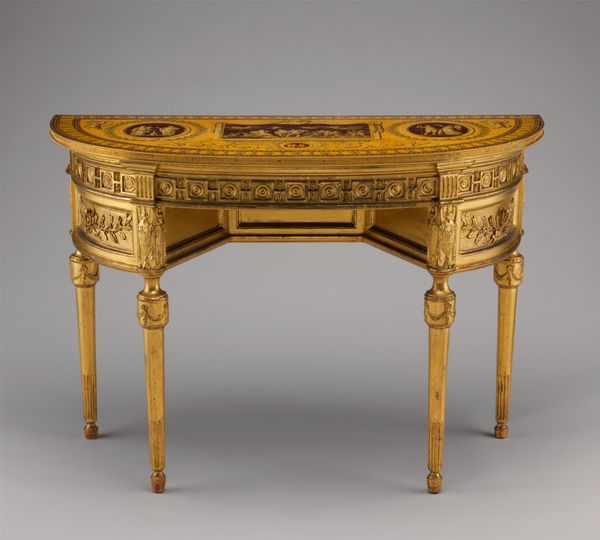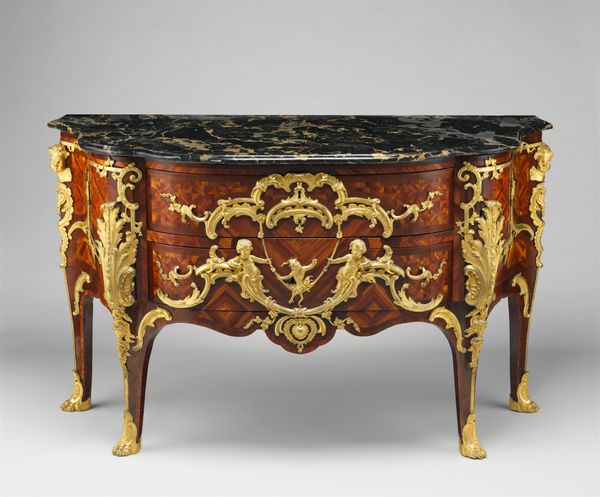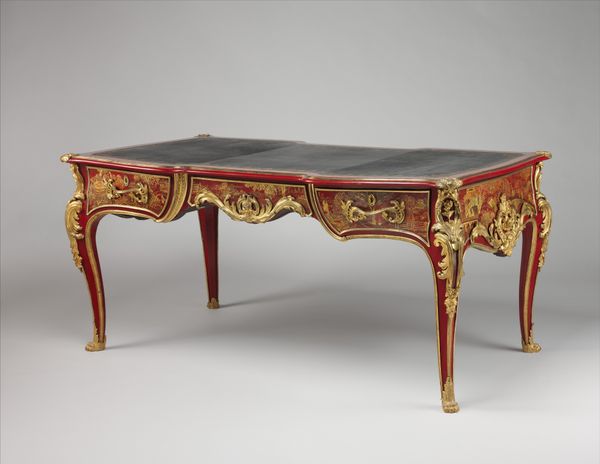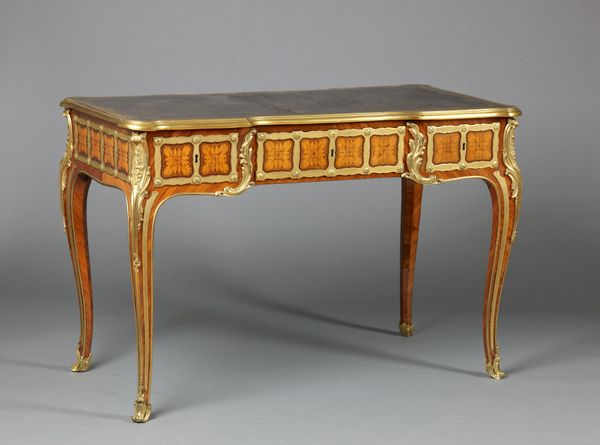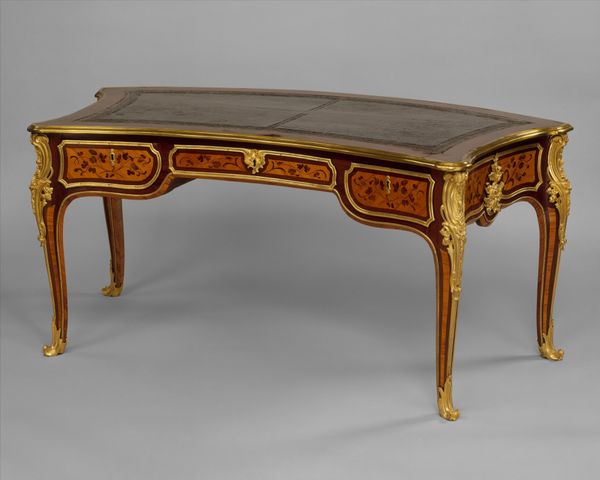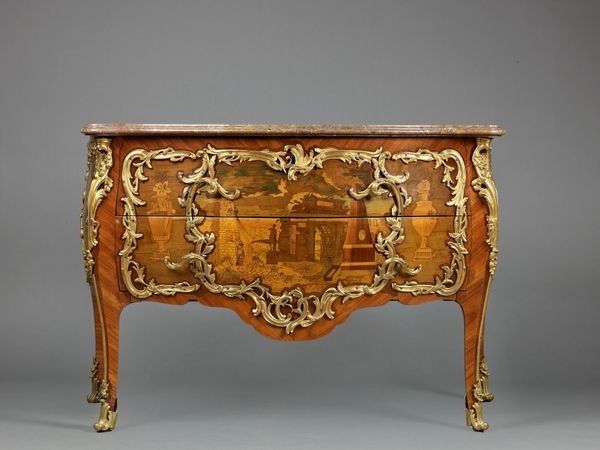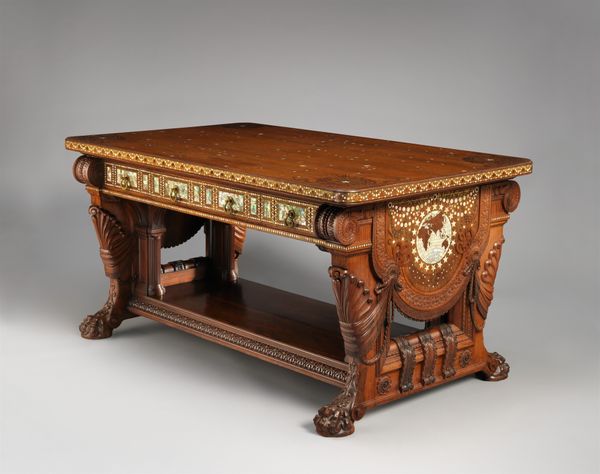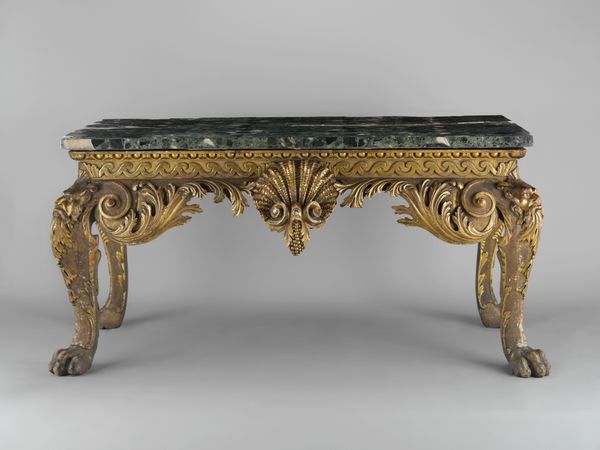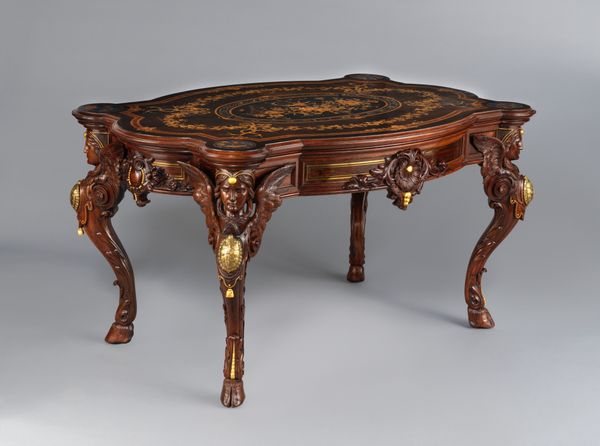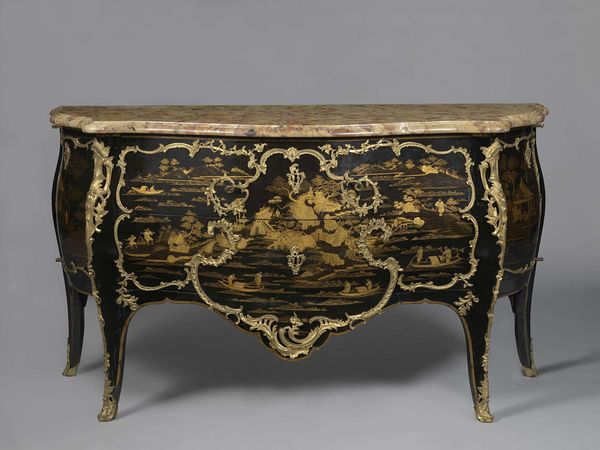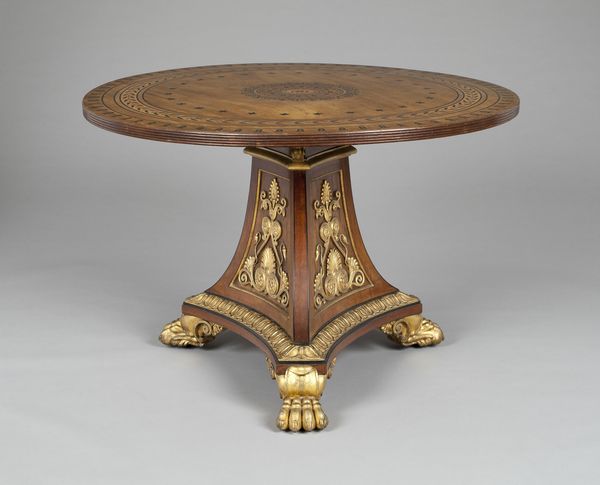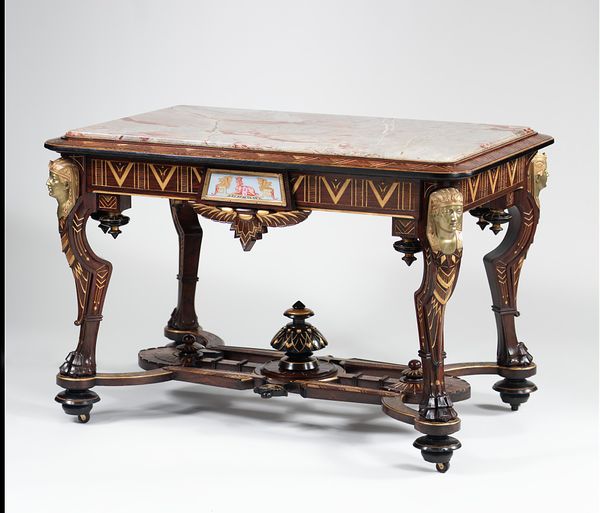
metal, sculpture, wood, marble
#
neoclacissism
#
metal
#
furniture
#
geometric
#
classicism
#
sculpture
#
wood
#
decorative-art
#
marble
Dimensions: 35 1/4 x 48 1/2 x 21 in. (89.5 x 123.2 x 53.3 cm)
Copyright: Public Domain
Curator: Welcome. Before us stands a remarkable Pier Table, crafted between 1815 and 1819 by Charles-Honoré Lannuier. This stunning piece resides here at the Metropolitan Museum of Art. Editor: My first impression is its bold synthesis of luxury and mythology. Those gilded sphinxes supporting a marble tabletop make a powerful statement. It’s impossible not to see it as a symbol of power and status. Curator: Absolutely. The use of costly materials—wood, marble, and metal—signals wealth, and the Neoclassical design reflects the aspirations of the emerging American elite in the early 19th century. Lannuier, as a French émigré, understood how to cater to this new class seeking to emulate European grandeur, imbuing their surroundings with signifiers of sophistication and authority. Editor: I’m particularly drawn to those sphinxes. They seem to embody a complex duality—the alluring, almost seductive female form combined with the power of a lion. How does this melding of genders and species play into the table’s broader symbolic language? Is it simply ornamental, or is there a deeper commentary on the shifting roles and perceptions of women in that period? Curator: That's a astute observation. It is likely these sphinxes represent idealized femininity through a lens of imperial ambition. Think of them as silent witnesses to a society grappling with evolving gender roles amidst rapid political and social change. Lannuier and his patrons were undeniably making a declaration. Editor: The very placement of such an imposing object – typically against a wall, beneath a mirror – speaks to performative identity. This table isn't just furniture, but a prop in a carefully curated display of wealth and taste meant to be observed, judged, and envied. Curator: I concur entirely. Considering its existence within elite domestic spaces reveals how art functioned as a marker of social distinction and cultural capital. Editor: This Lannuier pier table isn't merely a beautiful object, but a rich nexus of social, political, and aesthetic currents that invites a deeper investigation into the past. Curator: Precisely, by situating this within the tapestry of history, it challenges us to reevaluate how art helps create both personal and collective identity.
Comments
No comments
Be the first to comment and join the conversation on the ultimate creative platform.
